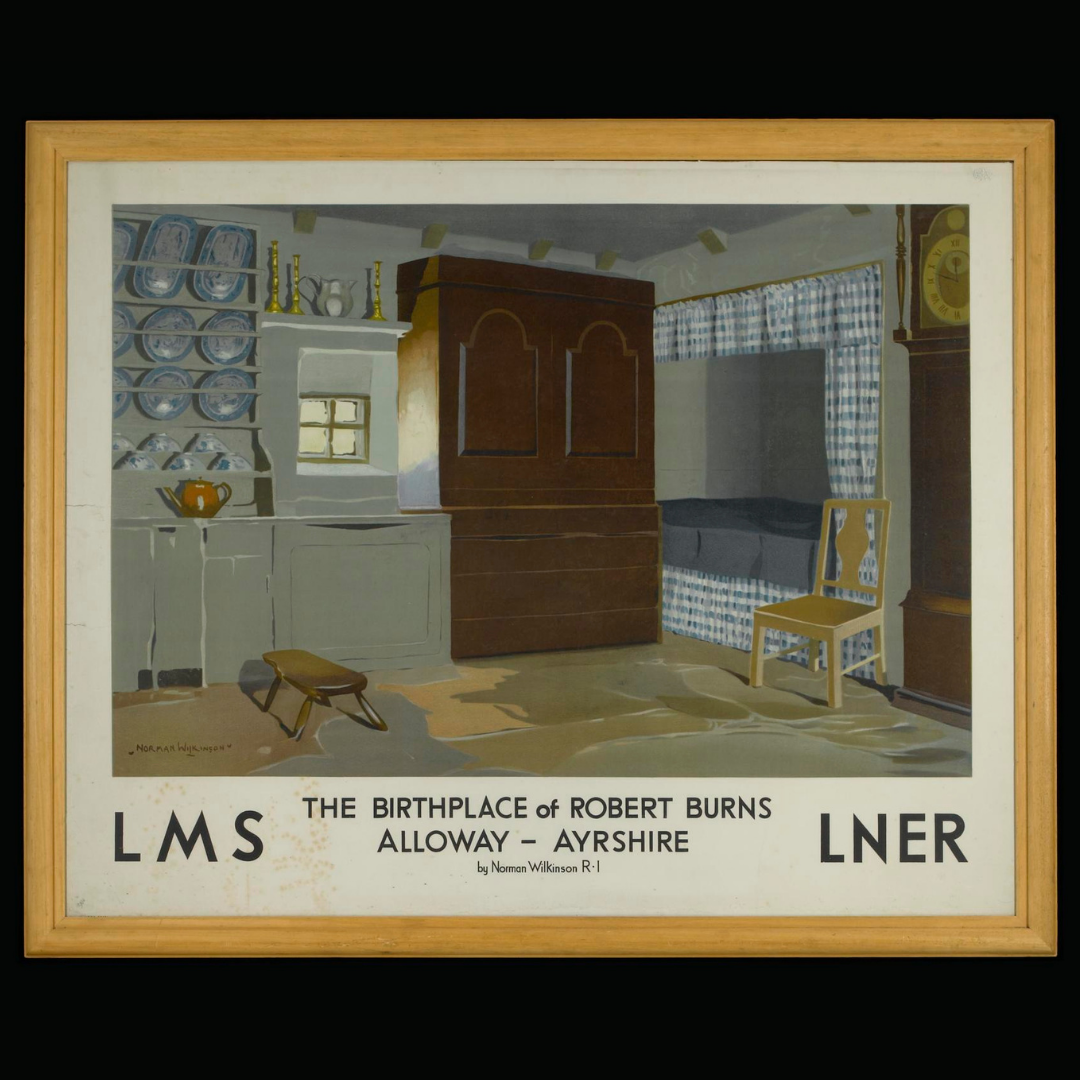Key in a search term below to search our website.
Key in a search term below to search our website.
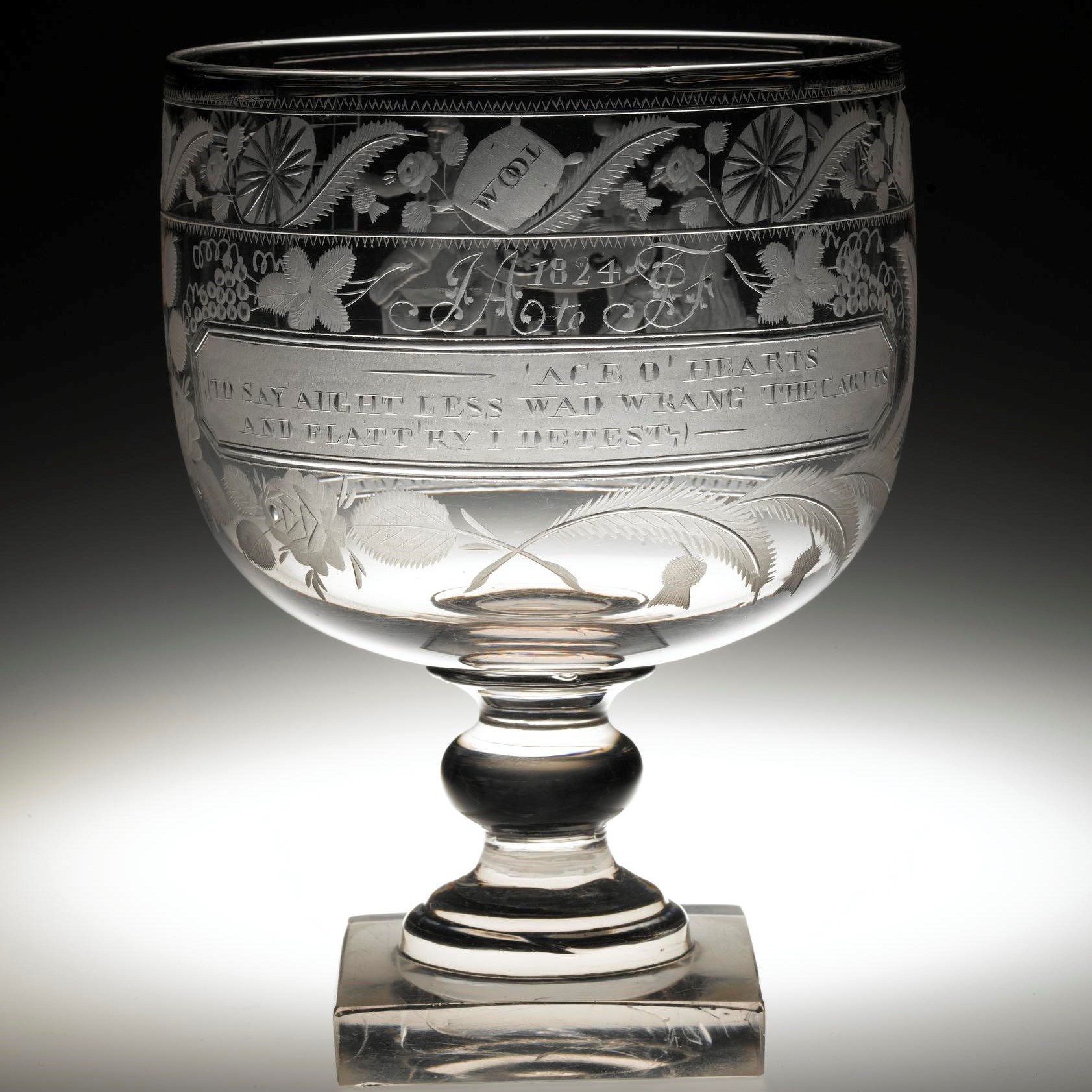
A variety of objects relating to the life of Scotland's bard can be found in National Museums Scotland's collections. Read on to discover examples of his possessions, tributes and depictions.
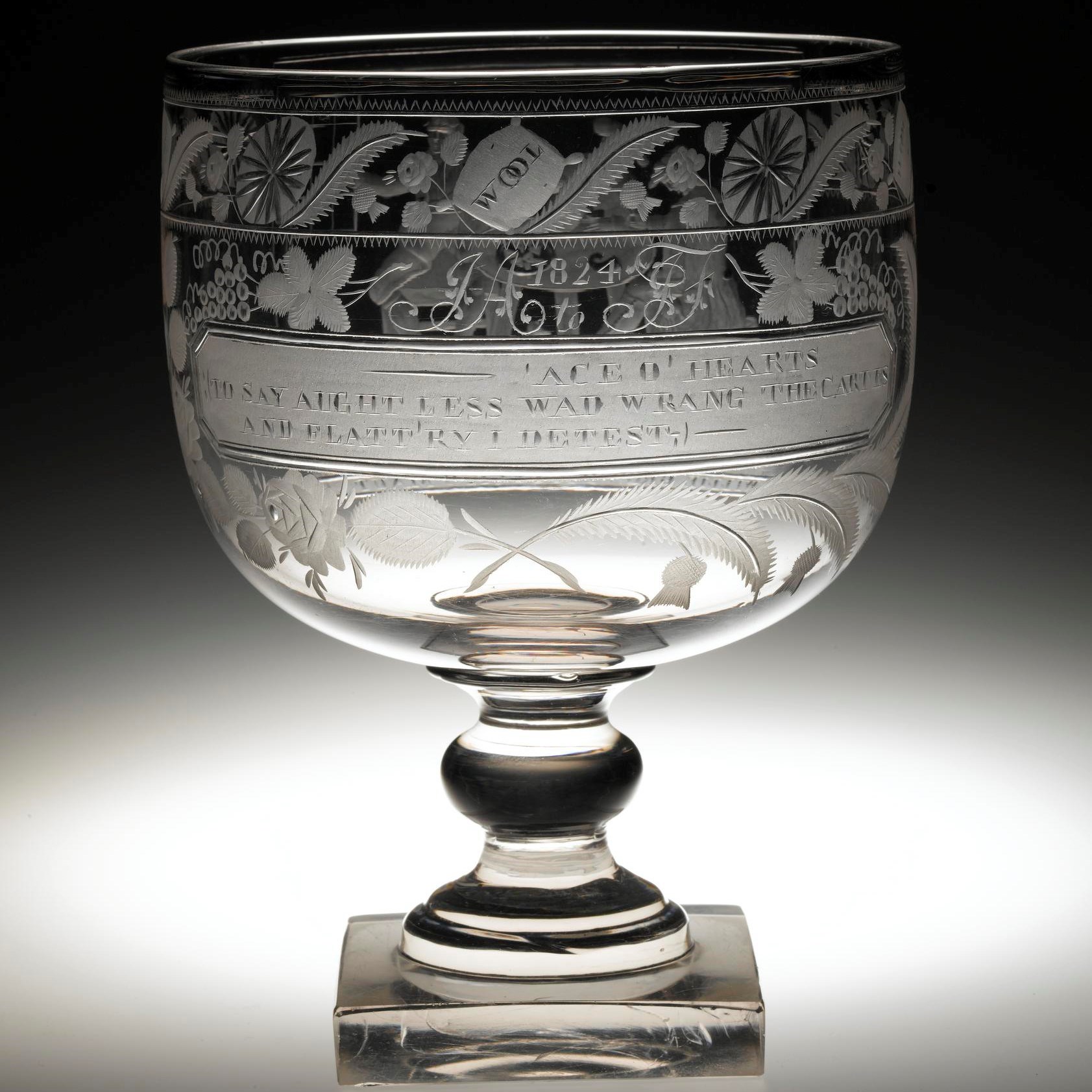
Goblet
A large glass goblet such as this would have been used as a punchbowl, and a clue to this use can be found amongst the words and images that have been engraved into the glass. On one side there is a quote from Robert Burns’ poem ‘Epistle to Davie, A Brother Poet’, and on the other a scene depicting three men drinking under which is written ‘Willie Brew’d a Peck o’ Maut’.
Burns composed this poem as a celebration of drinking and friendship. The punchbowl was made in 1824, by which time the formal celebration of Burns’ life and works through clubs and associations was widespread in Scotland.
Find out more on the goblet.
Tappit hen
The name ‘tappit hen’ is derived from the distinctive thumbpiece, or finial, that makes the object look like a crested (or 'tappit' in Scots) hen. These pewter drinking vessels were common in eighteenth century Scotland’s public houses because they were relatively cheap to make and could withstand use and, perhaps, abuse.
They could also be engraved with the owner’s name or initials. This example is thought to come from John Dowie’s famous tavern on Libberton’s Wynd in Edinburgh. John Dowie’s was the favoured drinking spot of Robert Burns and his companions, William Nicol and Allan Masterton, when the poet was in Edinburgh between November 1786 and February 1788.
Find out more on the tappit hen.
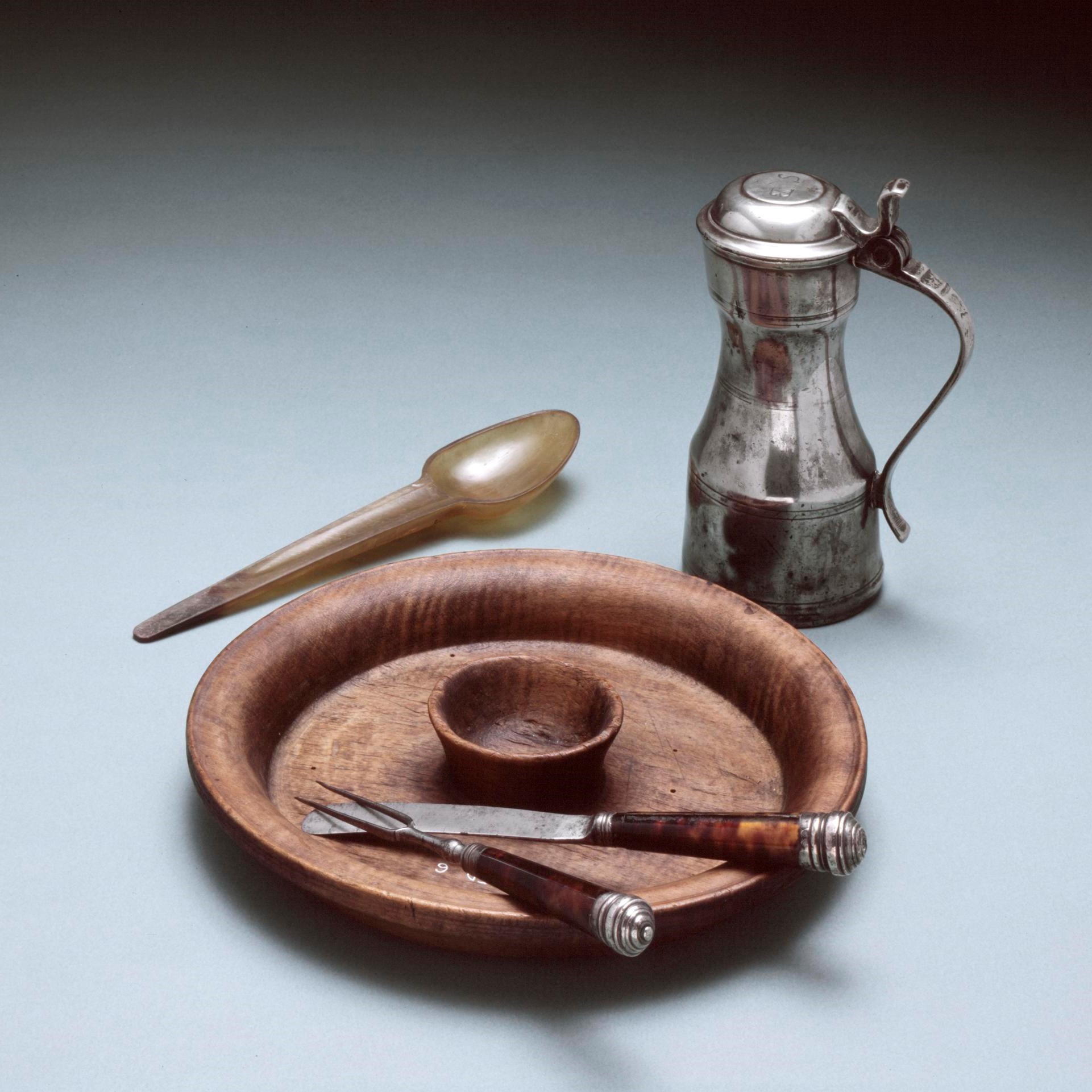
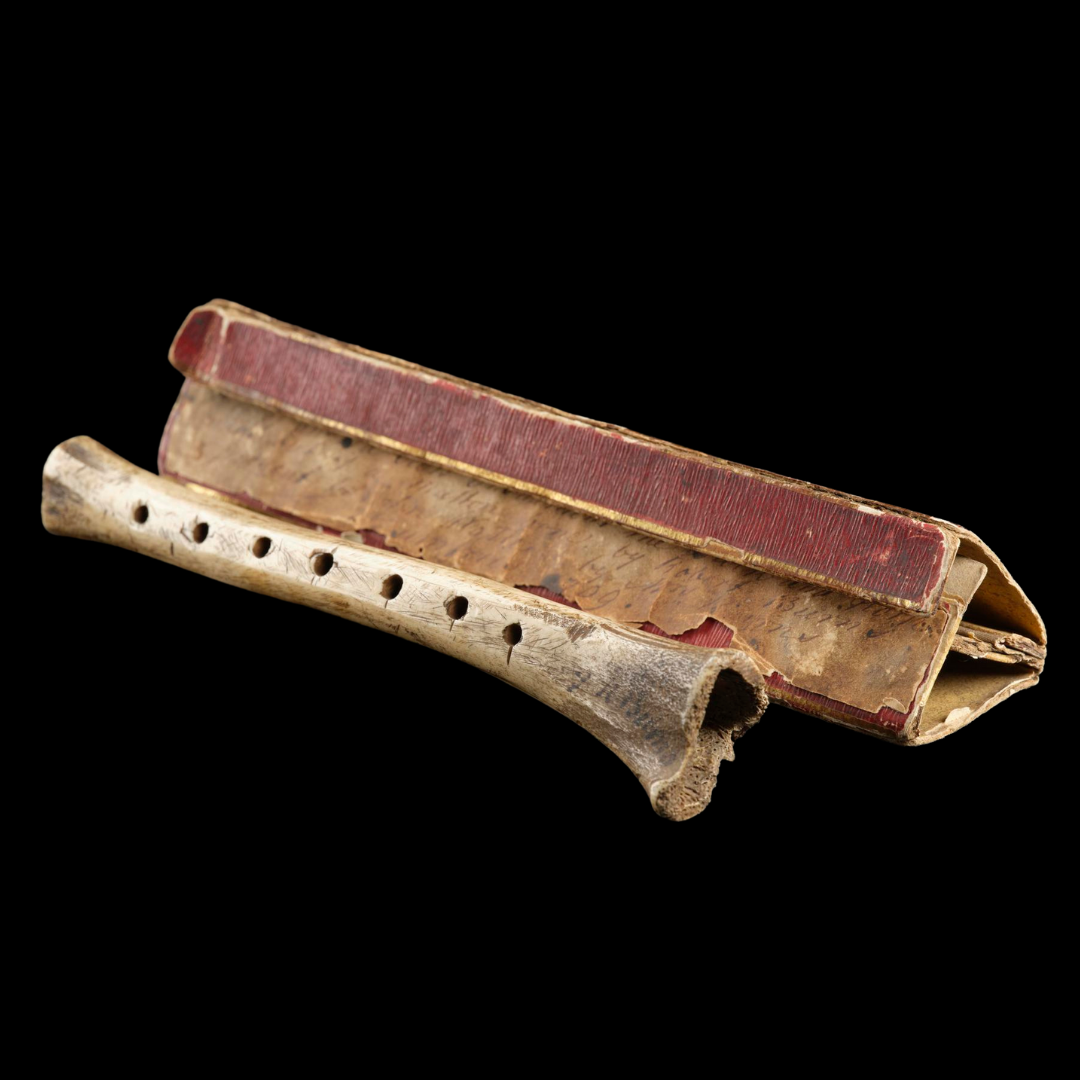
Chanter
This bone chanter, part of a stock-and-horn, may look rustic but it was an object that meant a lot to Robert Burns.
This type of instrument was traditionally played by shepherds, but by Burns’ time that tradition had almost vanished. After much searching, Burns finally acquired this instrument in Highland Perthshire, and wrote ‘This one of mine was made by a man from the Braes of Athole, and is exactly what the shepherds were wont to use in the country.’ Burns later designed his own coat of arms, where his stock-and-horn features proudly on the shield.
Find out more on the chanter.
Painted plaster bust
Leith’s statue of Robert Burns was erected by the town’s Burns Club in 1898, and sculpted by David Watson Stephenson. This model, or maquette, would have been used by Stephenson as he prepared his final, full-scale work.
For many of us, the physical image of Burns is instantly recognisable; from schoolbooks to public sculptures, the image of Burns has a distinct familiarity. This is largely to do with the fact that almost all images of Burns are reproduced from a single portrait of the poet painted by Alexander Nasmyth in 1787.
Find out more on the plaster bust.
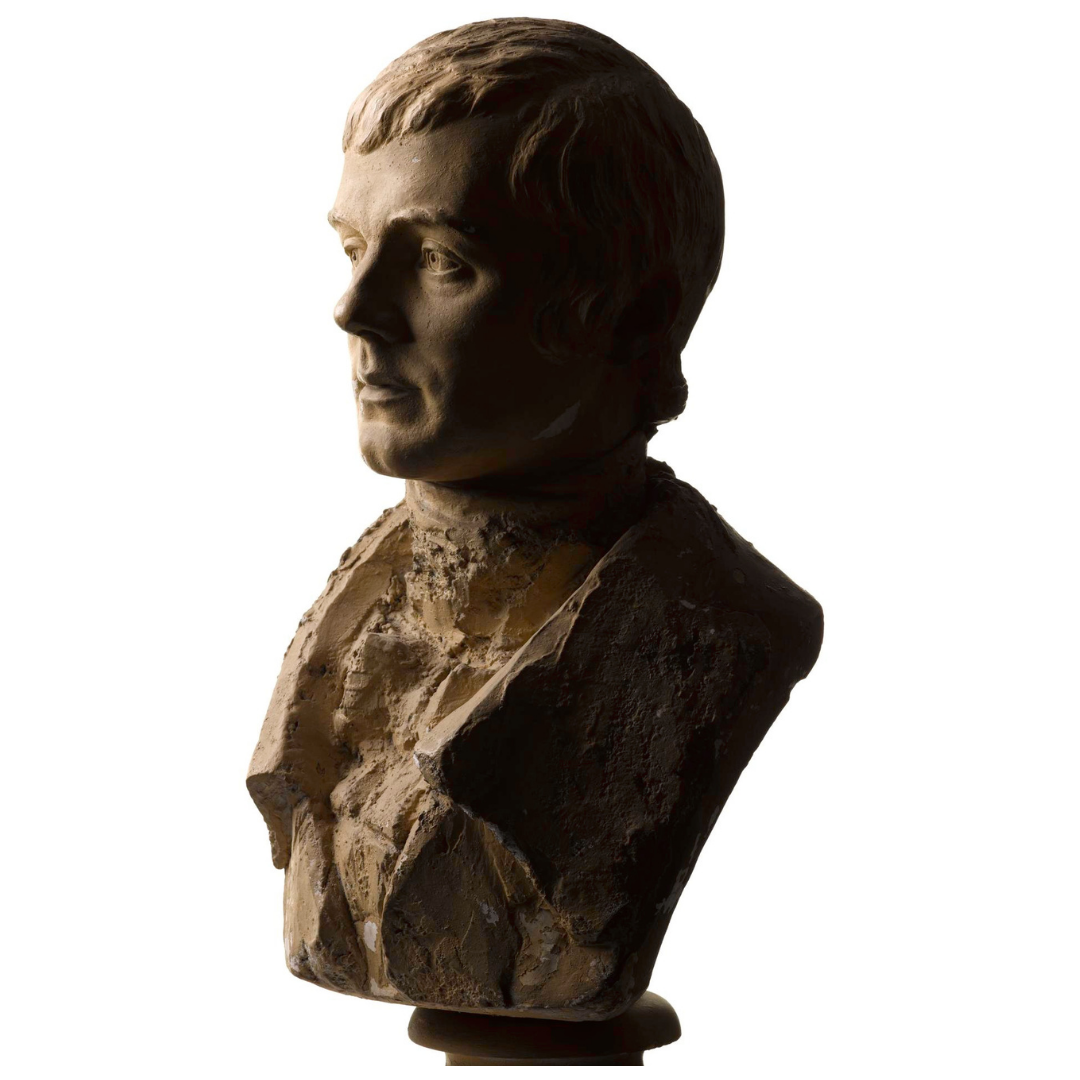
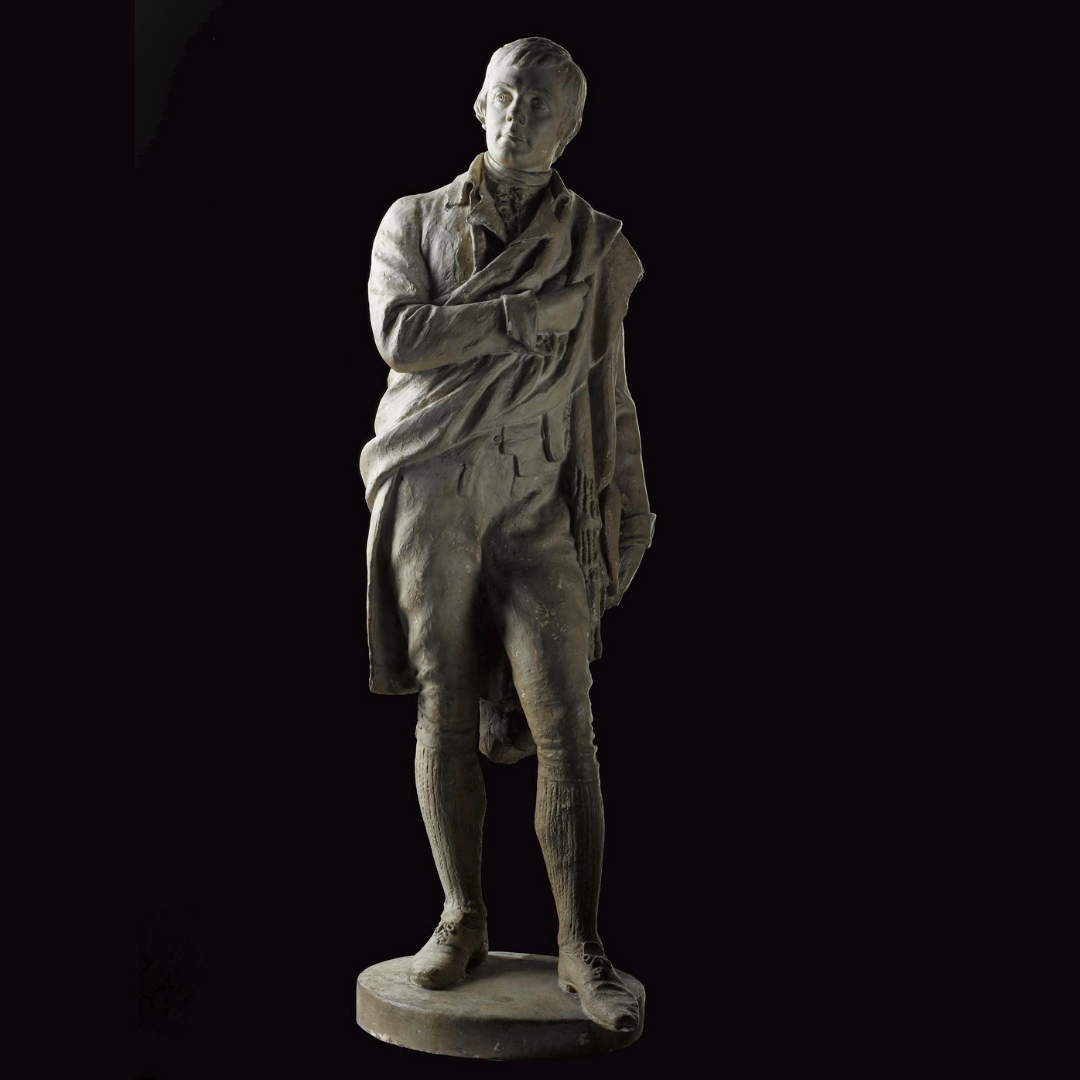
Plaster model
The full-scale plaster model of Robert Burns erected in Leith by the town’s Burns Club in 1898, and sculpted by David Watson Stephenson.
There are over sixty statues of Burns in cities across the world, most of which are located in the US, Canada, Australia and New Zealand, reflecting the trajectory of nineteenth and early twentieth century Scottish migration.
Find out more on the plaster model.
Woodblock
This woodblock would have been used to print the frontispiece of W. & R. Chambers' 1856 edition of The Life and Works of Robert Burns. The carved images depicts Thomas Hamilton’s Burns Monument at Alloway above the Brig o’ Doon – the bridge immortalised in Robert Burns’ epic poem ‘Tam o’ Shanter’.
William and Robert Chambers were brothers who founded a highly successful and innovative publishing house, which focused on popular education at affordable prices. Between 1865-69, William Chambers acted as Lord Provost of Edinburgh and today his name is memorialised in Chambers Street, the location of the National Museum of Scotland.
Find out more on the woodblock.
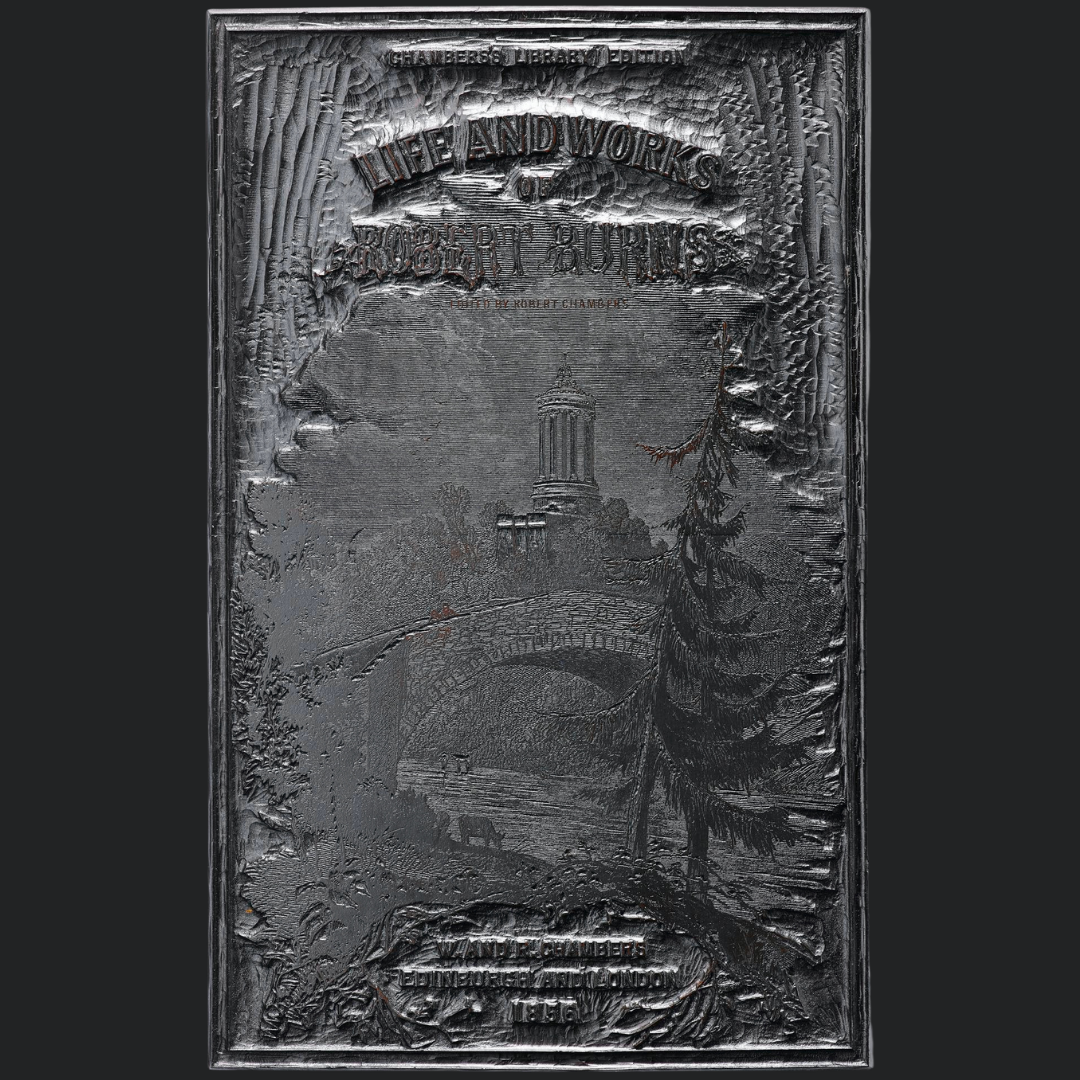
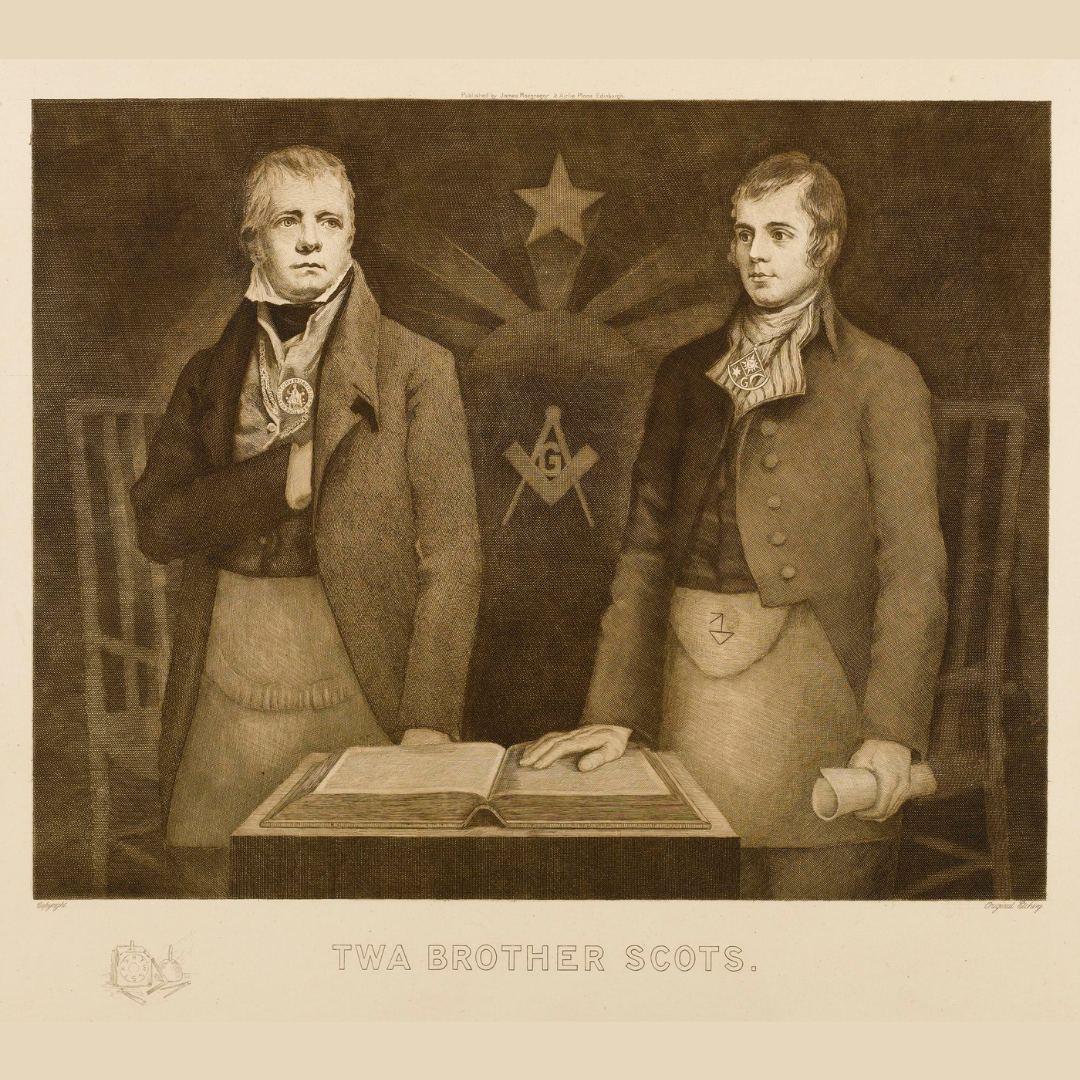
Engraving of Burns and Sir Walter Scott
Here we see Robert Burns and Walter Scott, two of the giants of Scottish literature, shown in their Masonic regalia. Whilst this engraving makes it look like Burns and Scott attended Masonic meetings together, they did not; Walter Scott did not become a Mason until 1801, five years after the death of Robert Burns.
However, the two writers did in fact meet. In the winter of 1786/7, a 15-year-old Walter Scott attended a literary salon at Sciennes Hill House, the home of the Enlightenment philosopher Adam Ferguson, where Burns was the celebrated guest. Scott later wrote of the poet: ‘His person was strong and robust, his manners rustic, not clownish; a sort of dignified plainness and simplicity, which received part of its effect perhaps from one's knowledge of his extraordinary talents.’
Find out more on the engraving.
Engraving of Burns' inauguration as Poet Laureate
Robert Burns arrived in Edinburgh in November 1786 to promote his recently published volume of poetry and make connections amongst the city’s literati – many of whom were Freemasons. Burns had been a Mason since 1781, and on 1 February 1787, he was made a member of Edinburgh’s historic Lodge Canongate Kilwinning. A month later, Burns was installed as Poet Laureate of the Lodge – the scene we see in this engraving.
The original painting was created in 1846, some 60 years after the event is depicts. The artist, William Stewart Watson, has clearly modelled his figure of Burns on Alexander Nasmyth’s portrait of poet from 1787.
Find out more on the inauguration engraving.
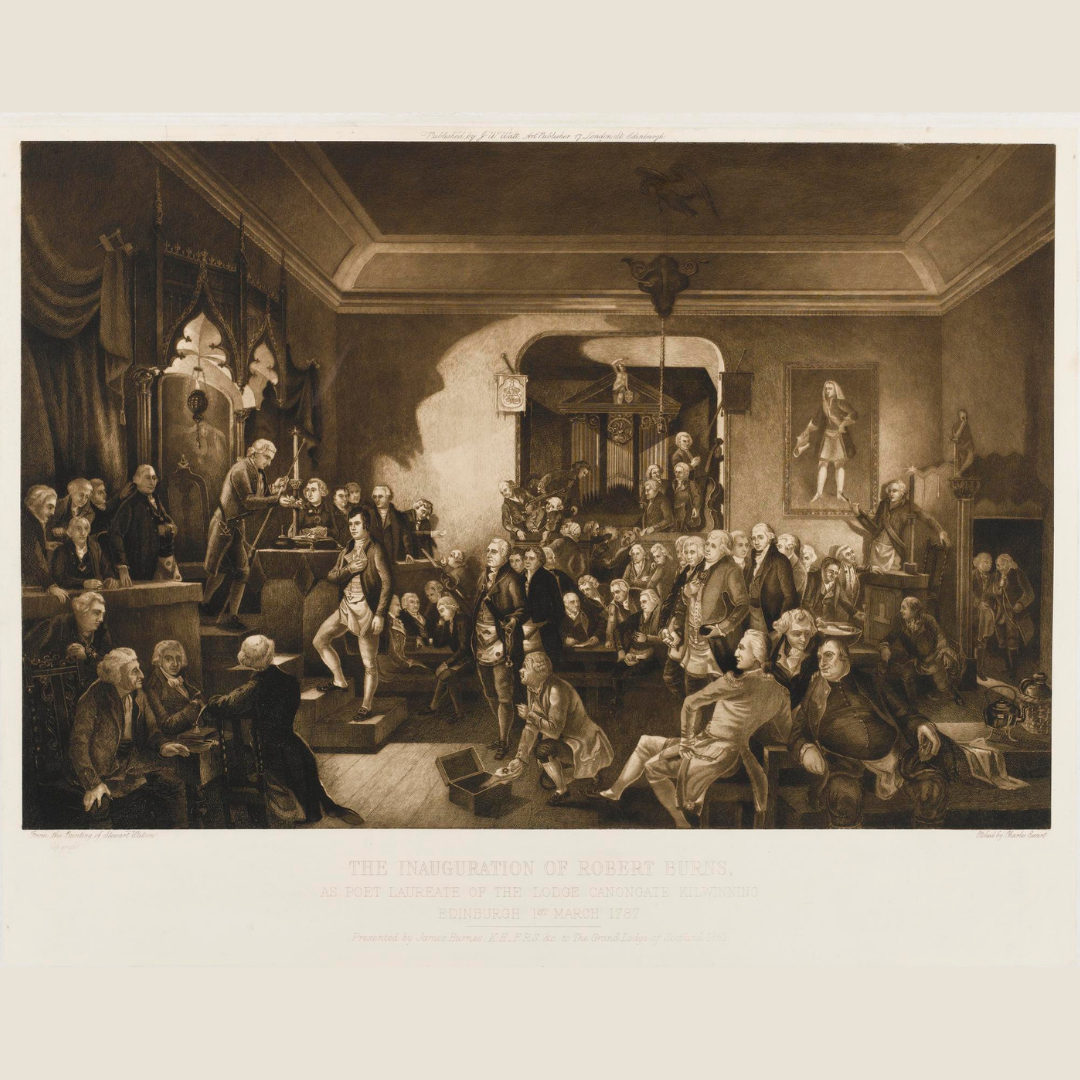
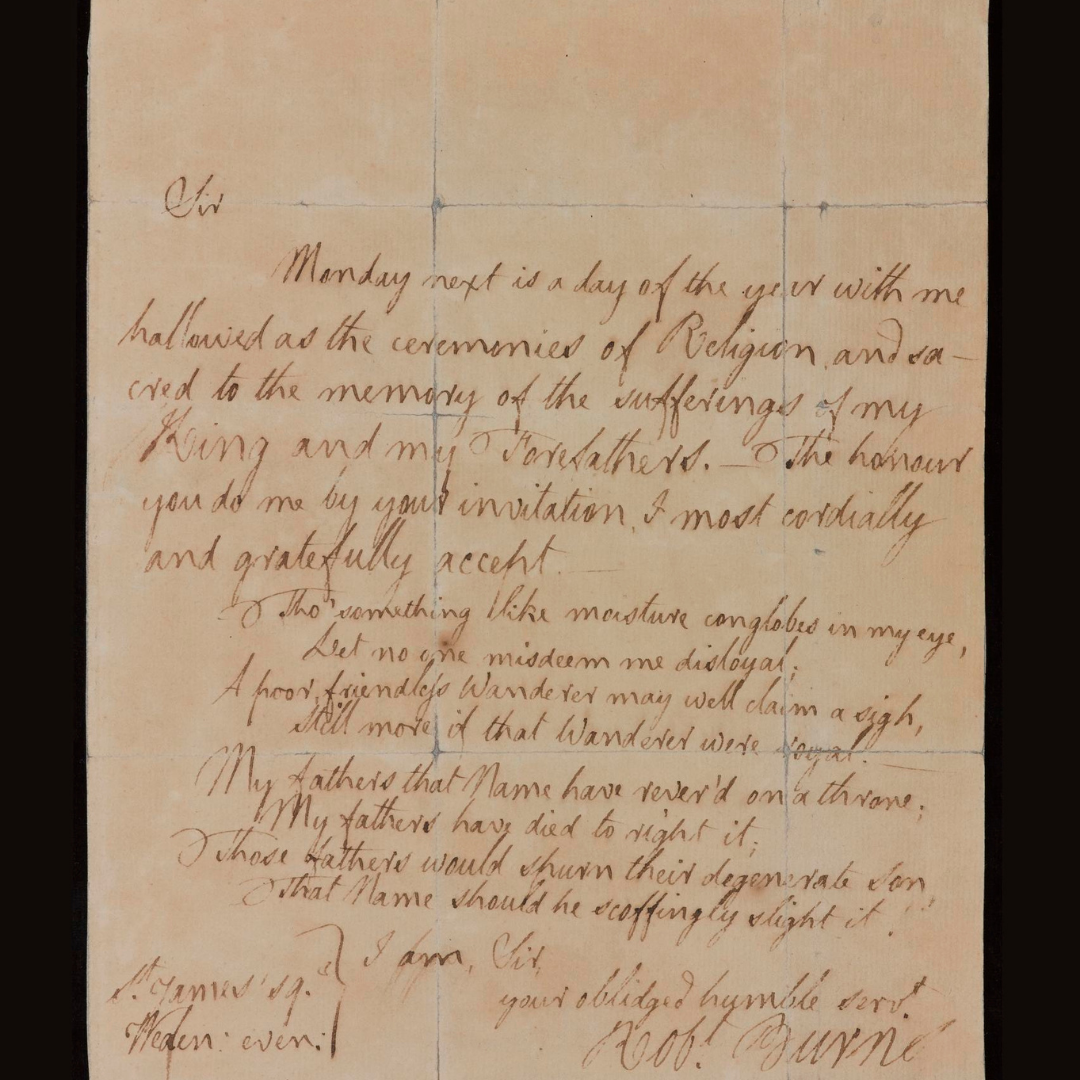
Letter
On 31 December 1787, the poet Robert Burns attended a dinner in Edinburgh to celebrate the 67th birthday of Prince Charles Edward Stuart, perhaps better known as 'Bonnie Prince Charlie'. This dinner was organised by the Jacobite-supporting Steuart Club, which had been founded in 1757 and met annually in the home of Mr James Steuart to commemorate the Prince’s birthday.
Ironically, the dinner attended by Burns took place a matter of weeks before the death of Charles Edward on 31 January 1788. This letter was written by Burns in acceptance of Steuart’s invitation to dine with him and his friends.
Find out more on the letter.
Stereocard
The Burns Monument on Edinburgh’s Regent Road is one of two distinctive monuments to the poet designed by the nineteenth century architect Thomas Hamilton. The other is in Alloway, the village of Burns’ birth.
The origins of Edinburgh’s Burns Monument can be traced to Mumbai, India, where in 1812, an expatriate Scot by the name of John Forbes-Mitchell, began to collect subscriptions amongst his countrymen for the erection of a monument to the memory of Robert Burns. It was not, however, until 1831 that the foundation stone was laid. Hamilton’s inspiration for both his Burns monuments was the Choragic Monument of Lysicrates in Athens. Using a stereoscope, the viewer of this card would have been able to see the monument in 3D.
Find out more on the stereocard.
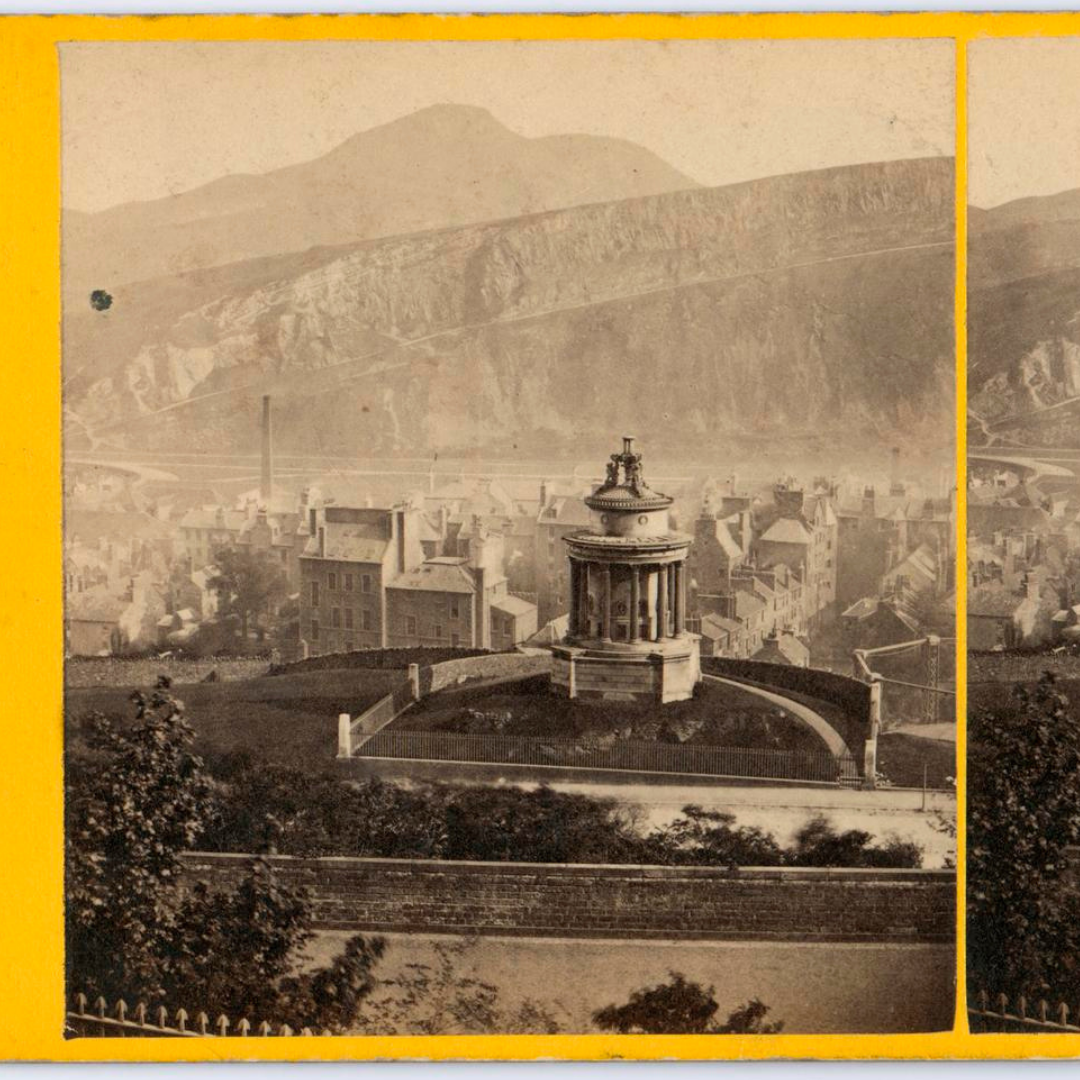
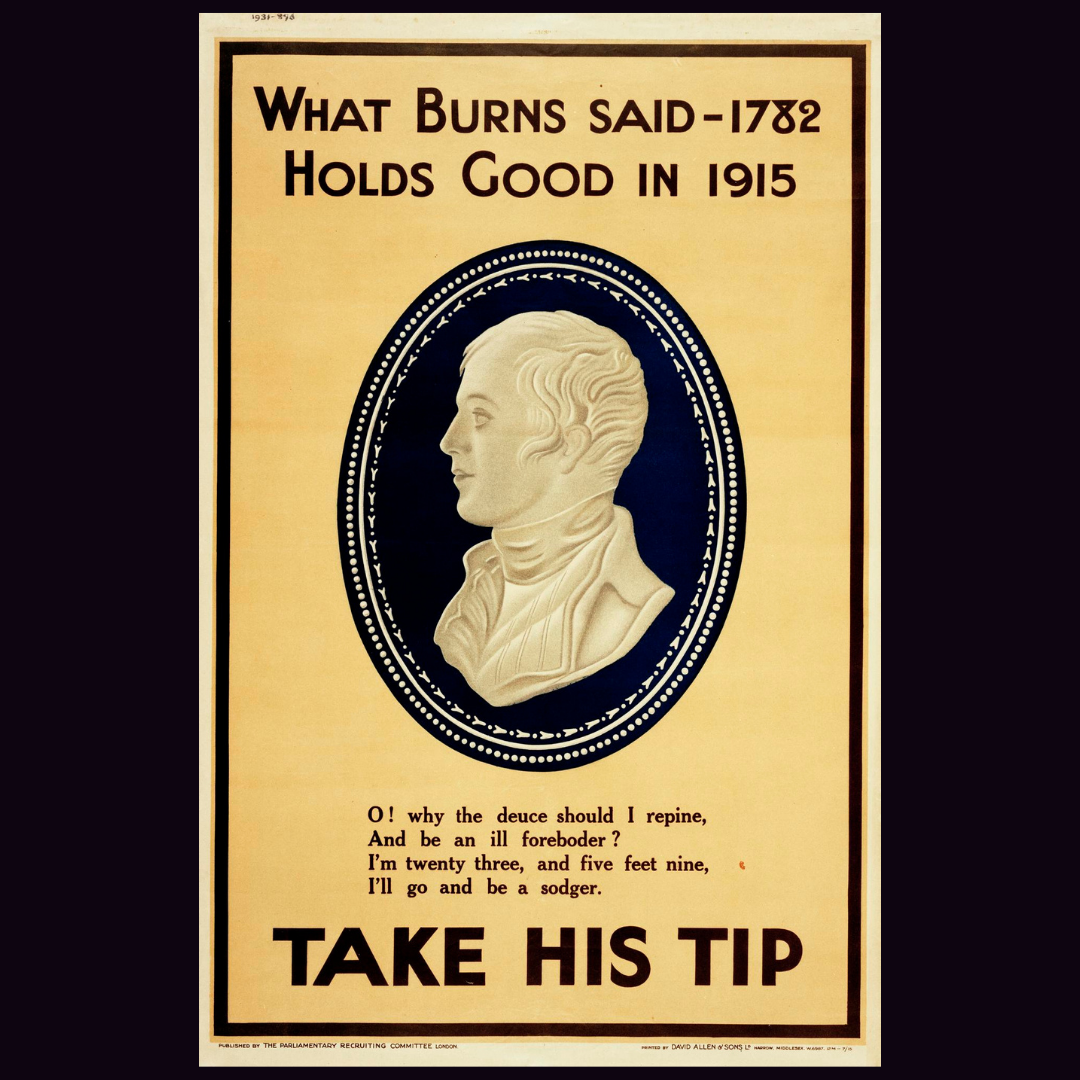
Recruitment poster
Perhaps the key to Burns’ enduring appeal is our ability to read his life and works as we choose. Here we see Burns presented as the loyal patriot, encouraging Scotsmen to enlist during the early stages of the First World War. The lines of verse are taken from a short poem written in 1782. In later life, Burns took up arms by joining the Royal Dumfries Volunteers, an unpaid part-time defence force raised against the threat of invasion during the French Revolutionary Wars. At his funeral in July 1796, members of Royal Dumfries Volunteers acted as the pallbearers of Burns’ coffin.
Find out more on the recruitment poster.
Railway poster
The notion of Robert Burns heritage tourism is nothing new. In July 1818, the English poet John Keats visited Burns’ birthplace which was by then being run as a museum-cum-public house. Although not taken by the cottage’s caretaker – who Keats described as a ‘great bore’ – the poet did manage to compose a sonnet ‘for the sake of writing some lines under the Roof’.
By the 1930s, Britain’s extensive rail network meant that people could easily travel for leisure. Rail companies such as LMS and LNER used evocative illustrations of cultural places and activities to advertise their services.
Find out more on the railway poster.
